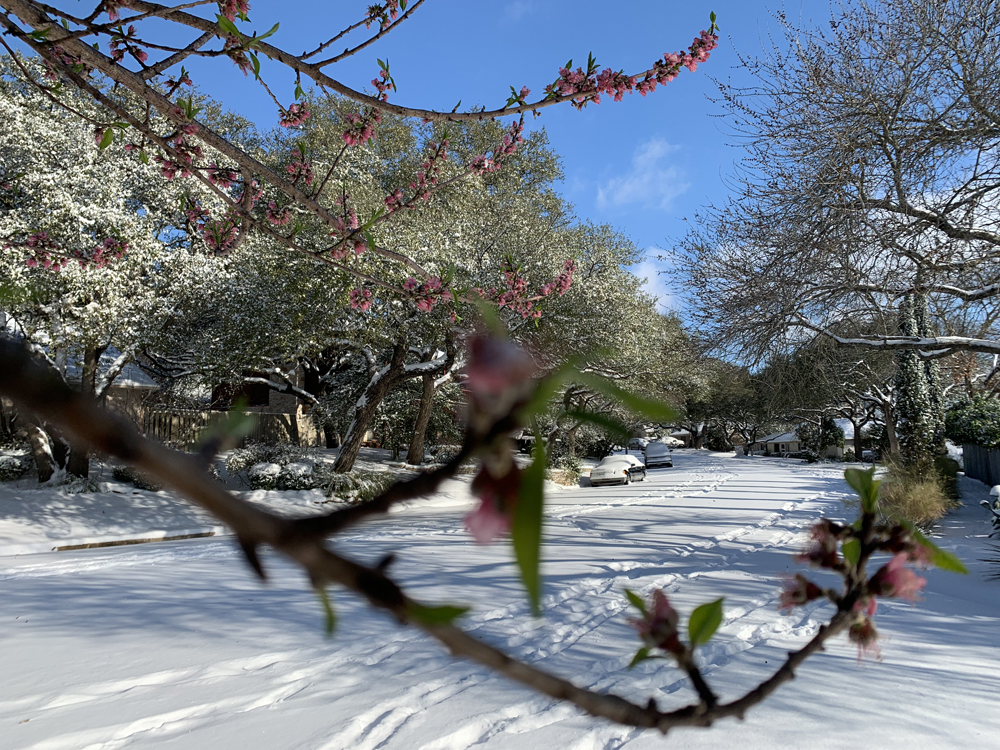
In sweltering heat, the results of a rapidly warming Earth are clear. In a blizzard, it can be more difficult to understand how global warming can cause such freezing cold.
An international research team examined three extreme events from the past winter to elucidate the mechanisms underlying such swings in temperature and weather. Their findings were published in Advances in Atmospheric Sciences on August 9.
The researchers examined two record-setting cold air outbreaks in China from late December 2020 to mid-January 2021 and the historic cold that struck North America's mid-west and deep south in February 2021.
"Comparing the 2020-21 winter to the last 42 winters, we used available observational data and simulated models to parse out how sea and atmospheric events may underlie extreme weather," said first author Prof. ZHANG Xiangdong from the University of Alaska Fairbanks.

The cold snap struck North America's mid-west and deep south in February 2021, resulting in the coldest recorded temperatures in almost a century in Austin, Texas. The flowering tree in the photo died after the cold snap. (Image by YANG Zongliang)
"Even though global warming and loss of Arctic Sea ice occurs every year, such extreme weather events that we investigate do not occur every year," said co-author James Overland from the National Oceanic and Atmospheric Administration (NOAA) in the U.S. "This is because they are caused by a combination of new global warming and extreme, but naturally occurring, precursor weather conditions in the jet stream and polar vortex."
The polar vortex -- low pressure, cold air in the atmosphere centered over Earth's poles -- causes cooler temperatures to cascade over the Northern Hemisphere during winter with the help of Earth's jet stream, which comprises air currents flowing from west to east. Abrupt temperature increases in an upper layer of the atmosphere, called sudden stratospheric warming, can drastically alter how the polar vortex and jet stream behave and interact.
The resulting weather can become even more extreme when complicated by changeable ocean temperatures and Arctic Ocean sea ice. The simultaneous occurrence of anomalous ocean thermal conditions in three ocean basins and the interaction of atmospheric dynamics drove hemispheric-scale, systematic changes in the atmospheric circulation, or weather pattern, to an extremely anomalous state.
Although all three events were linked to a sudden stratospheric warming event, the downstream effects were different in each one. "When attributing the factors responsible for an extreme event, we should have a broad point of view to catch the big picture," said co-author Prof. Timo Vihma from the Finnish Meteorological Institute in Finland. "It may consist of complex interactions of several factors acting far from each other in the hemispherical scale."
Co-author Annette Rinke, senior scientist at the Alfred Wegener Institute in Germany, further explained that extreme winter weather events are often driven by "remote" factors. "The study shows that anomalies in ocean temperatures in addition to the large-scale atmospheric circulation can play a key role in extreme weather events," Rinke said.
"Within cold air activities, clouds and precipitation and their associated latent heat can change, but there is a lack of observations for this," said co-author Prof. FU Yunfei from the University of Science and Technology of China. "Satellite remote sensing can help with this, including validating model simulations, which can help predict how precursor events may influence such things as monsoon season in East Asia."
"By studying these record-breaking cold spells, we can see the 'big picture' of extreme weather events." said co-author, HAN Zhe, scientist in the Institute of Atmospheric Physics, Chinese Academy of Sciences. "Though the events can be different, they might share similar underlying mechanisms, that is related to global warming. Along with the warming, the Arctic amplification and intensified ocean thermal anomalies may interact with the atmospheric circulation, such as the polar vortex and sudden stratosphere warming, to cause extreme cold or hot events."

86-10-68597521 (day)
86-10-68597289 (night)

86-10-68511095 (day)
86-10-68512458 (night)

cas_en@cas.cn

52 Sanlihe Rd., Xicheng District,
Beijing, China (100864)

